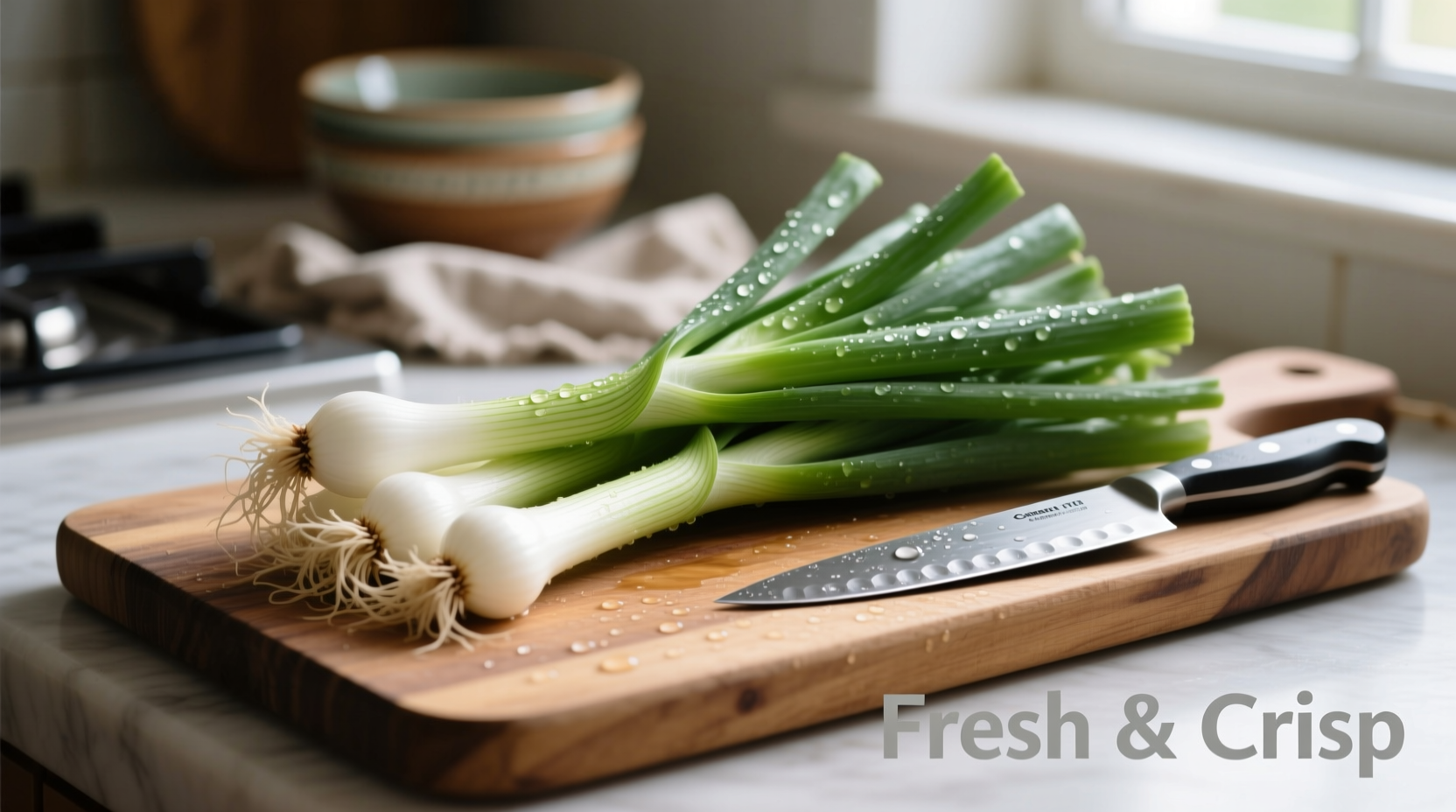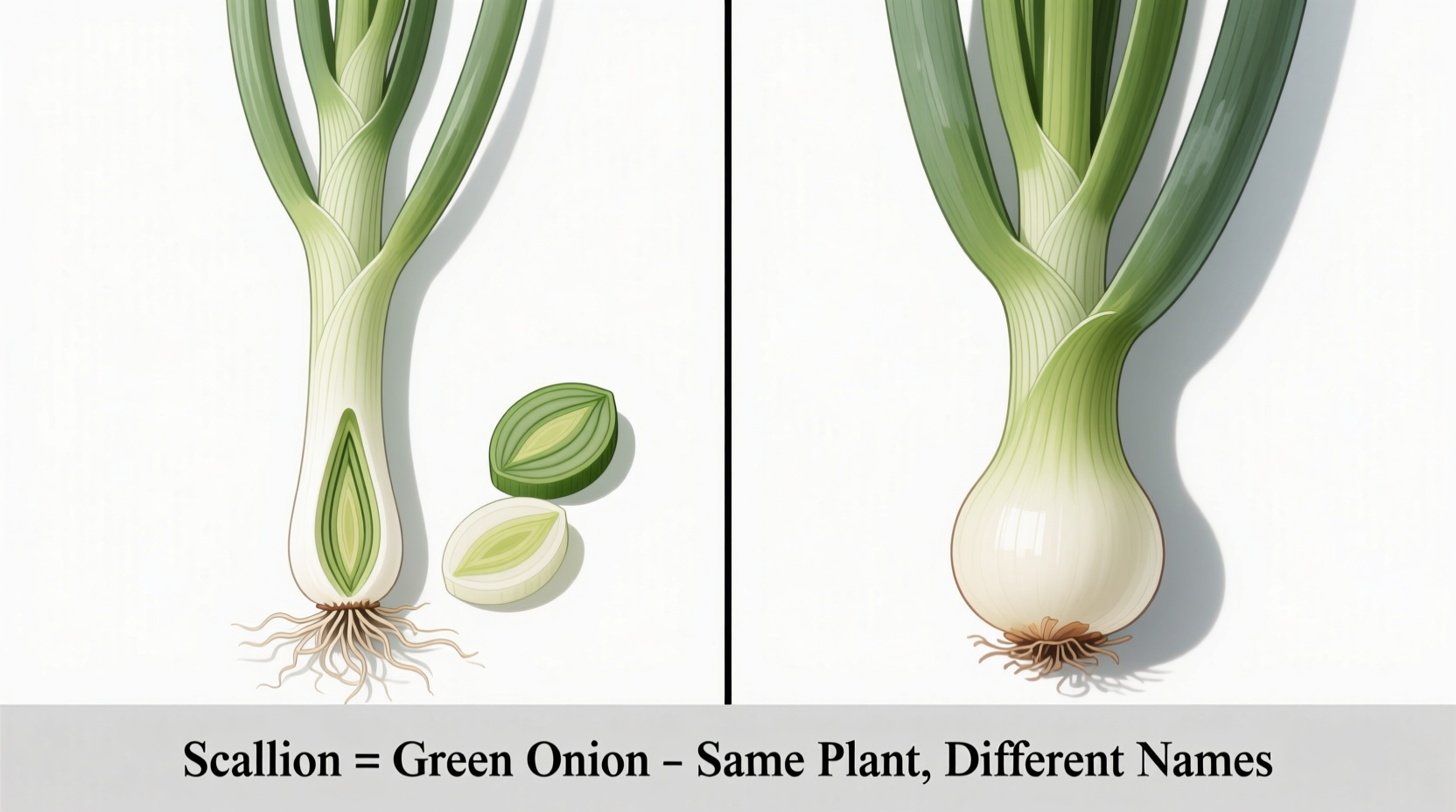Confused about whether to reach for scallions or green onions at the grocery store? You're not alone. This common culinary question trips up home cooks and professionals alike. Let's clear up the confusion once and for all with definitive information you can trust in your kitchen.
Understanding the Scallion-Green Onion Relationship
At their botanical core, scallions and green onions refer to the same plant species: Allium fistulosum. Unlike regular onions (Allium cepa) that develop large bulbs, this variety grows with a slender, cylindrical white base that never forms a substantial bulb. The confusion stems from regional naming conventions and subtle differences in harvesting practices.
| Terminology | Common Usage Regions | Harvest Timing |
|---|---|---|
| Scallion | Northeastern US, Canada, UK | Harvested earlier, typically 60-70 days |
| Green Onion | Southern US, Western US | Harvested slightly later, 70-80 days |
| Spring Onion | UK, Australia | Has small developing bulb |
Visual Identification Guide
When selecting these versatile alliums, look for these characteristics:
- White base: Should be firm and crisp, not slimy or mushy
- Green stalks: Vibrant green color indicates freshness
- Roots: Small white roots still attached show minimal processing

When Substitutions Matter in Cooking
While scallions and green onions are interchangeable in most recipes, understanding context boundaries prevents culinary mishaps:
Suitable Substitutions
- Stir-fries where both are used raw or lightly cooked
- Garnishes for soups and salads
- Compound butters and herb mixes
When Differences Become Noticeable
- Raw applications: Slightly more pungent green onions may overpower delicate dishes
- Longer cooking: Green onions' slightly larger base holds up better in extended cooking
- Pickling: Traditional scallions create more uniform pickled products
According to USDA agricultural specialists, the flavor difference between these varieties is minimal—typically less than 5% variation in sulfur compounds that create that characteristic allium bite. The University of California Cooperative Extension confirms that both terms refer to the same botanical classification with only harvesting timing differences affecting size.
Maximizing Flavor in Your Dishes
Professional chefs recommend these techniques for getting the most from your scallions or green onions:
Proper Storage Methods
Keep them fresh for up to two weeks by trimming roots, placing cut-side down in a glass with 1 inch of water, and covering loosely with a plastic bag in your refrigerator. Change water every 2-3 days.
Cutting Techniques
- Thin slices: Use for garnishes and raw applications (cut crosswise at 1/8-inch intervals)
- Chopped: Ideal for cooking (separate white and green parts, add whites first)
- Whole: Perfect for grilling or roasting (leave root end intact)
Culinary Applications by Part
| Plant Part | Flavor Profile | Best Uses |
|---|---|---|
| White base | Stronger, more pungent | Sautéing, stir-fries, soups |
| Light green section | Moderate flavor | Most cooking applications |
| Dark green tops | Milder, grassy notes | Garnishes, cold dishes, infused oils |
Common Misconceptions Clarified
Several persistent myths confuse home cooks:
- Myth: Green onions are immature regular onions Fact: They're a distinct species that never develops a large bulb
- Myth: Spring onions are the same as scallions Fact: Spring onions have a small developed bulb and are harvested later
- Myth: The green parts are too bitter to eat Fact: All parts are edible with proper preparation techniques
Practical Kitchen Tips
Transform your cooking with these professional techniques:
- Flavor layering: Add white parts early in cooking for base flavor, greens at the end for fresh aroma
- Freezing: Chop and freeze in ice cube trays with water for ready-to-use cooking additions
- Regrowing: Place root ends in water on a windowsill to grow your own continuous supply
- Substitution ratio: Use 1:1 replacement in most recipes without adjustment
When to Choose One Name Over Another
Understanding regional terminology prevents grocery store confusion:
- In Northeastern markets, ask for scallions to get the slender variety
- Western US markets often label them as green onions
- Asian markets may use both terms interchangeably
- Recipe context matters more than name—focus on the visual description











 浙公网安备
33010002000092号
浙公网安备
33010002000092号 浙B2-20120091-4
浙B2-20120091-4